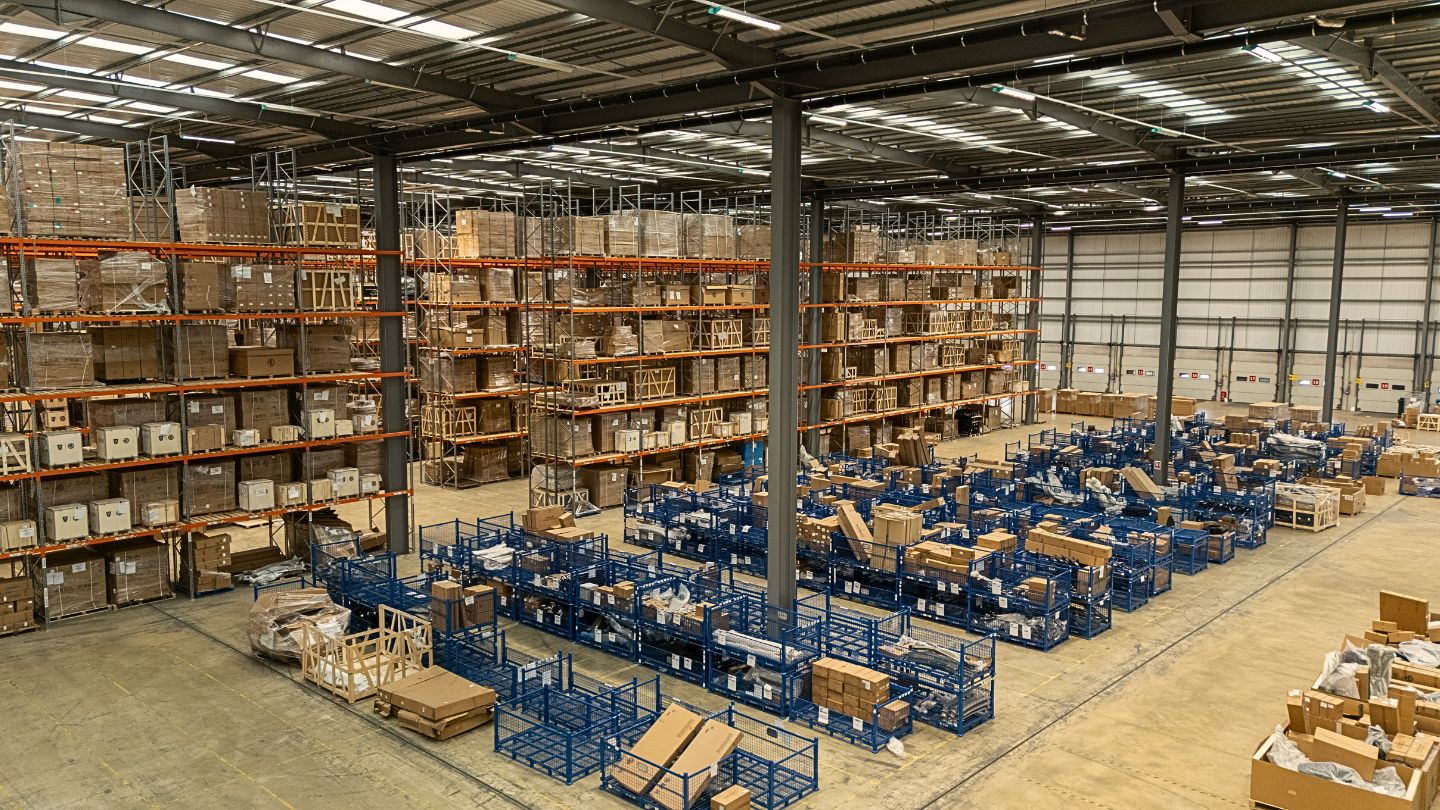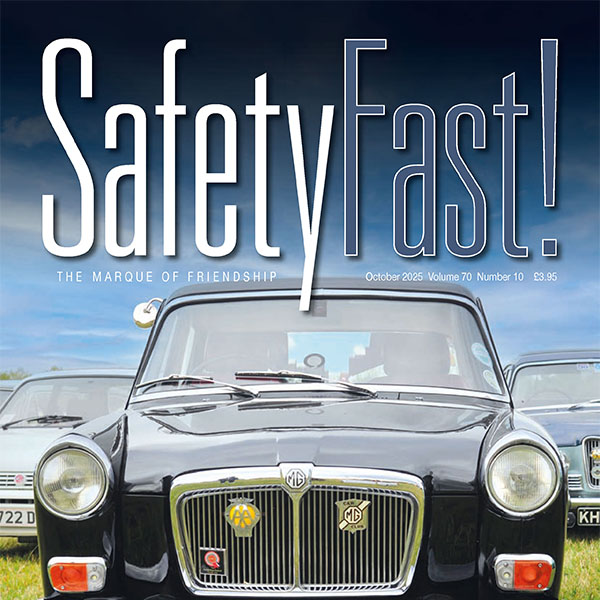Reproduction in whole or in part of any article published on this website is prohibited without written permission of The MG Car Club.
MG – EARLY DAYS
By Peter Neal
Born at Dulwich, South London in 1888, Cecil Kimber moved to Lancashire with the family some eight years later, where his father started up a printing ink business. When the young Cecil completed his formal education at Stockport Grammar School it was pre-ordained that he should enter the family business.
To satisfy his teenage desire for speed and excitement (selling printing ink was not the most thrilling of occupations) the young Kimber bought a series of motorcycles, each one more powerful than the last, culminating in a collision with a car which resulted in a badly damaged leg and left him with a permanent limp. With part of his compensation (the car driver was deemed to have been responsible for the accident) Kimber bought himself a Singer 10 motor car which sparked off his lifelong enthusiasm for motoring.
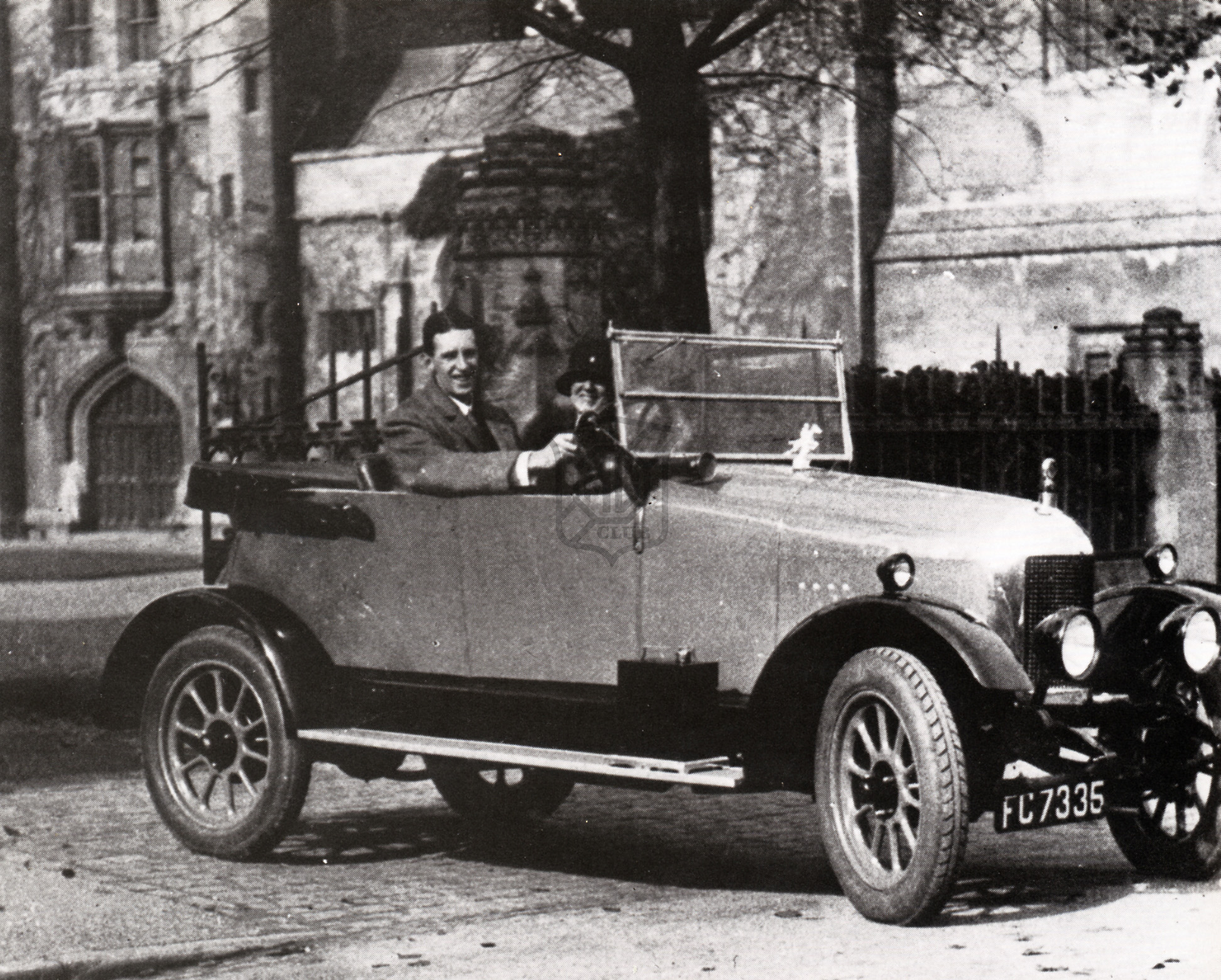
In his mid-20s he became friendly with A.W. Reeves, the designer of the Crossley car, and although there is no evidence of him being employed by that company, it was apparently enough to convince him that his future lay in this burgeoning industry. To this end he joined the luxury car maker Sheffield Simplex, married his fiancée Irene Hunt and moved to Sheffield where the couple set up home. Not for long though, as a year later they were on the move again, this time to AC Cars of Thames Ditton, where Cecil filled the position of buyer with Irene acting as his secretary.
Two years later saw the couple on the move yet again, their new destination being the component manufacturer E.G. Wrigley of Birmingham. Wrigleys supplied components such as steering gear and axles to the motor industry including Morris Motors. It may have been whilst working for this company that Kimber first came into contact with William Morris. What we do know is that by 1921 he had been engaged as sales manager of the Morris Garages by the Oxford entrepreneur. At that time the Morris Garages comprised the main repair garage located at the junction of Longwall Street and Holywell, the Queen Street showrooms and the workshops in Cornmarket Street.
Kimber was initially located at Queen Street, however just a year later the sudden resignation of the ‘Garages’ general manager Edward Armstead saw him propelled into this position, with responsibility for all three sites. Apparently unfazed by this additional workload, Kimber was soon at work looking at designs for special bodywork on the standard Morris chassis. Working together at home, he and Irene would sketch out ideas which could then be translated into the finished coachwork by Carbodies of Coventry. These were relatively simple two-seaters with space at the back for occasional passengers.
The hood was so arranged that it would cover all the passengers when erected, not just the two at the front, which may have led to the term ‘Chummy’ to describe these cars. A few simple chassis modifications were also incorporated into the vehicle whilst the body was painted a pastel colour and finished with leather upholstery. To begin with these specials were assembled at the Longwall premises, but in February 1923 ‘production’ was transferred to an old stabling yard in Alfred Lane that Morris Garages had been using to store second hand cars. Initially the staff consisted of Cecil Cousins and his assistant, Stan Saunders from Cornmarket, but they were soon joined by Jack Lowndes and George Morris from Longwall.
In March 1923 Kimber qualified for a gold medal in the Lands End Trial driving his own ‘Chummy’ that he’d had ‘hotted up’ by the boys at Longwall. Presumably encouraged by this result he designed a rather more sporty version of the Morris Cowley and had six bodies made by the old established Oxford coachbuilding firm of Raworth. These were distinguishable by the raked windscreen with their triangulated glazed supports, and the pair of boat style ventilators located on the scuttle panel just in front of the screen. Cousins later claimed that these cars were the first that could even be considered as MGs. Under the skin of course these were very much Morris cars and were indeed advertised as such by the ‘Garages’. At £350 these cars were proving difficult to sell, not helped by Morris Motors announcing a similar model which they called the ‘Occasional Four’ based on the Oxford chassis and retailing at £215.
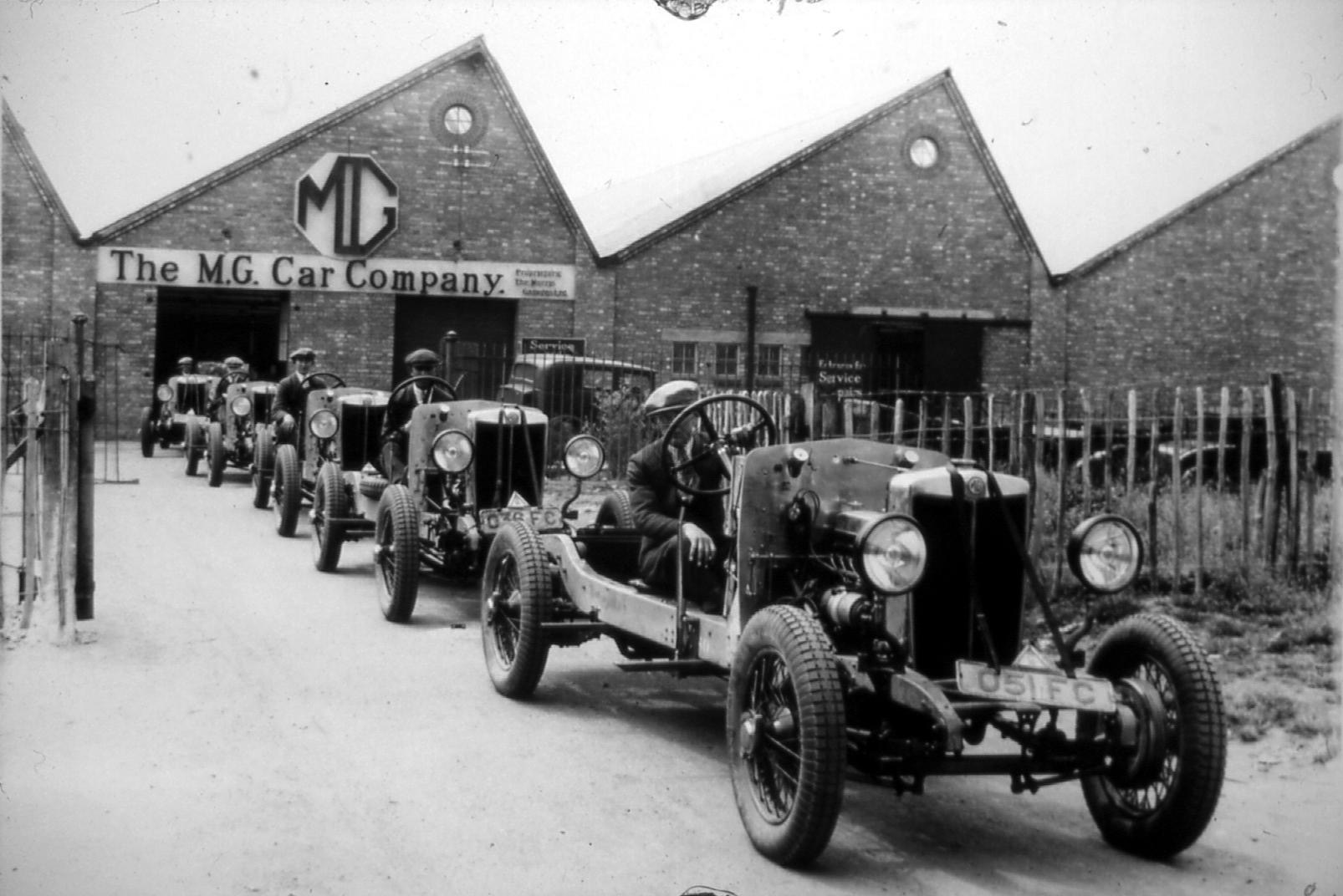
Kimber then tried a number of permutations on the 14/28 Oxford chassis but it wasn’t until March 1924, when one of his sales team, a certain G.S. (Jack) Gardiner ordered a special body to his own design on a modified 14/28 chassis, that things began to gel. It is believed that the polished aluminium Gardiner body was made by Clary Hughes of Birmingham. It was much admired, and Kimber had a similar body made for Billy Cooper, one of his special customers, by Carbodies. On this car the wings and valences were painted blue to complement the polished aluminium and ‘Ace’ wheel discs were fitted to hide the standard Morris artillery wheels. A dozen of these tourers had been built by the end of the year and at least four differing versions were offered at the 1924 Motor Show, from the open two-seater at £350 to a vee-front saloon at £460. By this time too the MG octagon logo was in use and could be found in most of the Morris Garages advertisements.
On September 1 1924 Morris Motors made a number of changes to the standard Morris range including larger brakes on the Oxford chassis, which also offered a four-seater version with a longer wheelbase of 9ft instead of the previous 8ft 6in. Kimber made good use of this extra length and designed a magnificent all aluminium four-seater open tourer which featured an optional two tone finish sandwiching polished aluminium between a painted bonnet top and painted wings. The result was stunning and was so far removed from the standard Morris which formed its basis that he dropped the Morris name from his advertising and called it simply the MG Super Sports. The chassis modifications which had increased in number also distanced it from its Cowley built cousins although it continued to share the 13.9hp Oxford power unit. The following 12 months saw sales of these cars take off with something in the region of 160 cars emanating from the Alfred Lane workshops. Kimber’s MG was well and truly in business.
The success of these Morris Garages specials created their own problems. Alfred Lane was no longer suitable for the kind of numbers that were required. Kimber began casting around for new premises. As it happened Morris Radiators Branch had themselves recently relocated to a site not far away on the Woodstock Road. Kim managed to persuade them to allow him the use of a bay at the newly constructed works. Concurrently with this move Kimber engaged a works manager by the name of George Propert to oversee production. Remarkably, although less than a couple of years had elapsed since their lowly beginning at Alfred Lane, the original workforce of Cousins and Saunders had now grown to some 50 men. Cousins was still responsible for the build of the cars, a role he would fulfil for most of his working life.
September 1925 brought with it the usual crop of minor changes to the Morris chassis including a welcome price reduction (passed on by Kimber). Further models were included in the MG catalogue but all variations, whether two- or four-seaters, now used the Oxford chassis. Bolt on wire wheels were now specified on the open cars with painted steel wings and bonnets replacing the earlier aluminium panels. Paint colours were also standardised but optional colour schemes were available at extra cost.
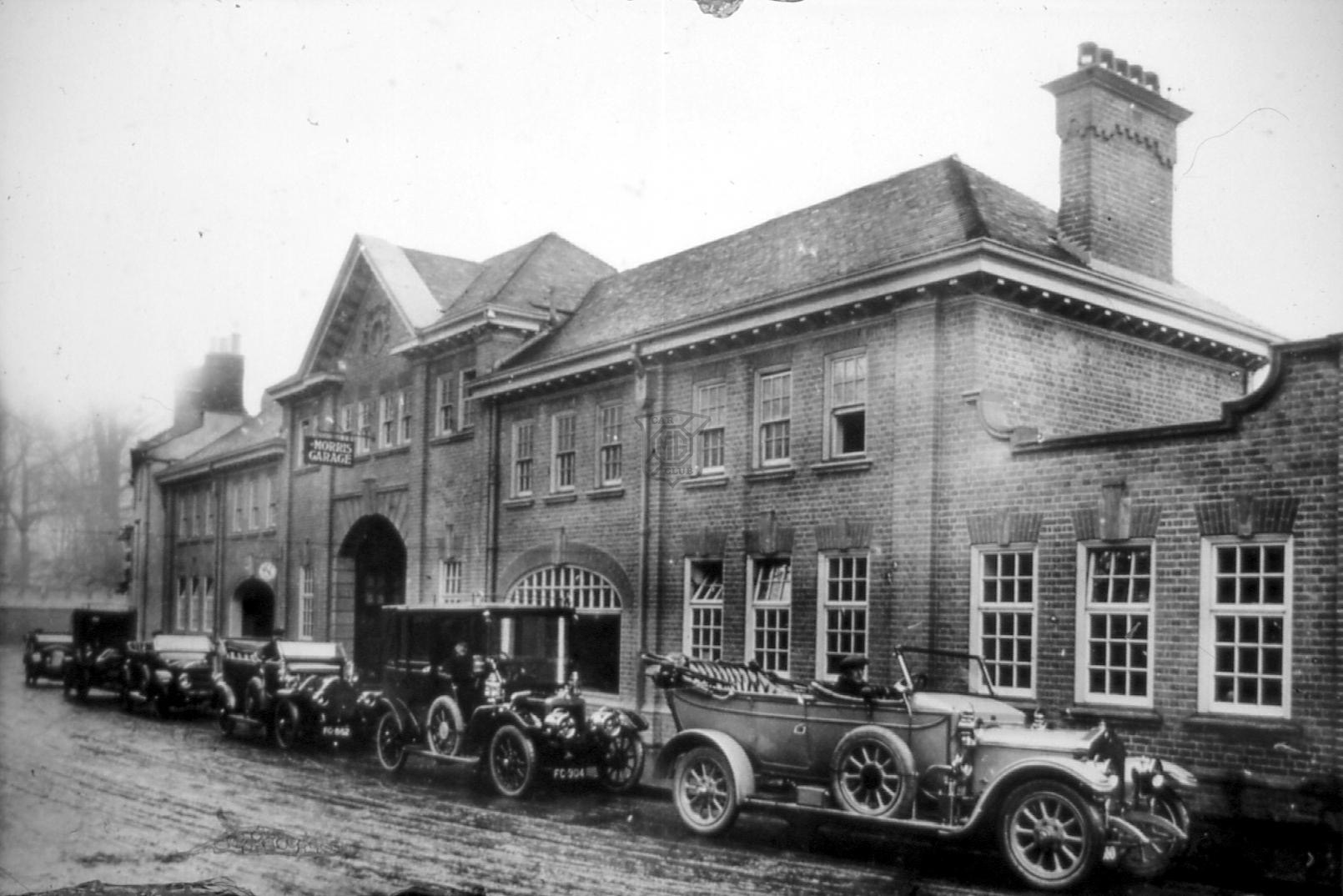
Whilst the Bainton Road (Radiator) factory appeared to be unaffected by the General Strike of 1926, Kim suddenly found himself without Propert who had decided to move on to a similar position with Harper-Bean. Fortunately Cousins was able to fill the breach. Later that year Kimber was to find himself with an unexpected problem. Morris Motors had not only replaced the bullnose radiator with a large flat one (following current American fashion), but had completely redesigned the Oxford chassis which not only now had a shorter wheelbase but was wider and heavier than its predecessor. Kim was forced into a redesign of his MG Super Sports with the additional worry that the extra weight would have a negative effect on performance. He lost no time in bringing in H.N. Charles, a young engineering graduate at Morris Motors with whom he was acquainted, to assist with the chassis modifications. The new car that emerged during the winter was less attractive than its predecessor but thankfully sales seemed to be unaffected.
It is never easy to apply strict rules to MG nomenclature in these early days of production but as a general rule of thumb it can be said that the bullnose cars may be regarded as being 14/28 models whilst the later flatnose cars fall into the category of 14/40s. Another bit of MG history that is difficult to pin down is exactly when these cars began to carry the enamelled octagon badge as we know it today. When the flatnose radiator came in it generally carried a Morris badge or a Morris Garages variant of it, but by the end of 1927 all cars appear to be badged with the MG octagon.
No sooner had Kimber managed to get production of his new flatnose cars underway than another more serious problem was to raise its head. H.A. Ryder, the boss of the radiator plant, was putting pressure on Kim to release the units he was using to allow him to increase the output of radiators. Unable to find a suitable alternative, Kimber took the bull by the horns and approached Morris. With his heart in his mouth he asked his boss for £10,000 for a new factory on a site not far from the great Morris works at Cowley.
Fortunately Morris agreed to the request and building began immediately at the Edmund Road site. Although the eventual cost was half as much again, Morris was happy to write the cheque. MG moved into their new factory in the September of 1927 and production of the MG Super Sports was soon under way. A new model was added to the range – a fabric covered wooden saloon body supplied by Gordon England. One of these, used as a demonstrator, was finished in a black fabric which had the appearance of being sprinkled with gold dust. This soon earned the name of ‘old speckled hen’ among the workforce and has since inspired a very successful brand of ale.
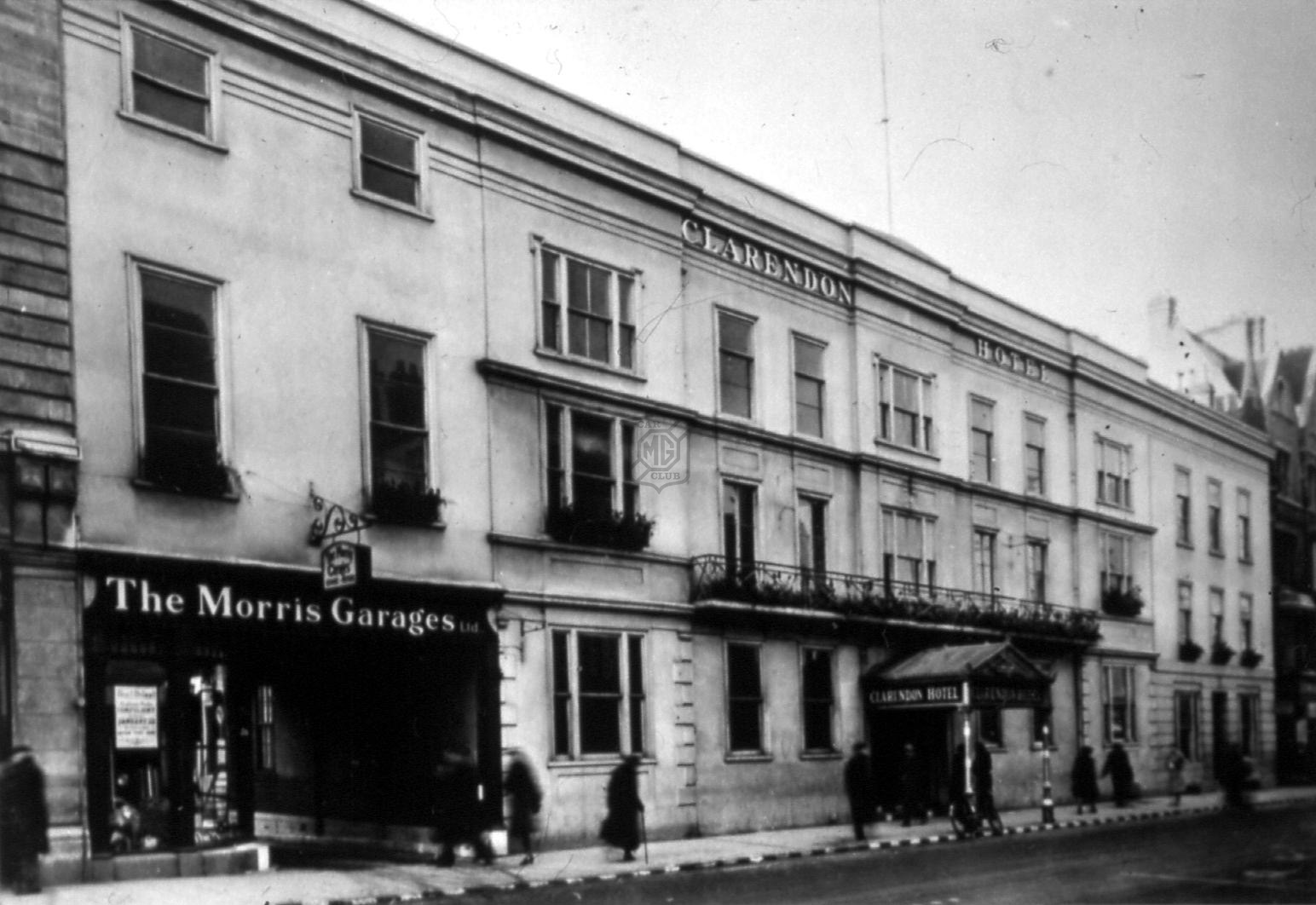
In July 1927 the Morris Garages was registered as a limited company. A year later a new company was formed which was established as The MG Car Company (Proprietors the Morris Garages Ltd). Kimber’s fledgling offspring was almost ready to leave the nest.
Whilst chassis and engines were still obtained from the Morris factory, everything was completely dismantled on arrival at Edmund Road and carefully rebuilt with special attention to the engine. Once rebuilt the chassis were removed to a running in bay where the engines would be run on coal gas with the rear wheels on rollers to simulate a 750 mile road test. Once this had been completed the engine would be decarbonised. When the cars were ready for the body to be fitted they would be driven to Carbodies at Coventry for this purpose. They were then brought back to Edmund Road for final adjustments before being made ready for the customer to collect.
Sales of the 14/40 had begun to tail off in 1928, dropping by about a quarter. Morris sales had also fallen for the first time and Kimber reasoned that it was time for some new thinking. Whilst his main concern was the limitation of the four cylinder side valve engine he felt there was a pressing need to further upgrade the basic Morris chassis. With nothing better available in the Morris range he set about designing his own. With the assistance of at first Cousins and then a draughtsman by the name of Keith Smith assisted by an apprentice who went by the name of Jack Daniels (who in later life would work with Alec Issigonis on the design of the ubiquitous Mini) a suitable design was arrived at.
For the engine Kimber went round to the back door and persuaded an old friend, Frank Woollard, now the manager of Morris Engines, to design and build a six cylinder 2.5 litre overhead cam device. They somehow contrived to get William Morris’s grudging approval for this engine for use in the Morris range, allowing Kimber to use it for his new car. This was unveiled at the 1928 Motor Show at a basic price of £480. Twin carburetters, a brand new MG radiator, Rudge-Whitworth centre-lock wheels and fly off handbrake contrived to make this the sportiest MG yet.
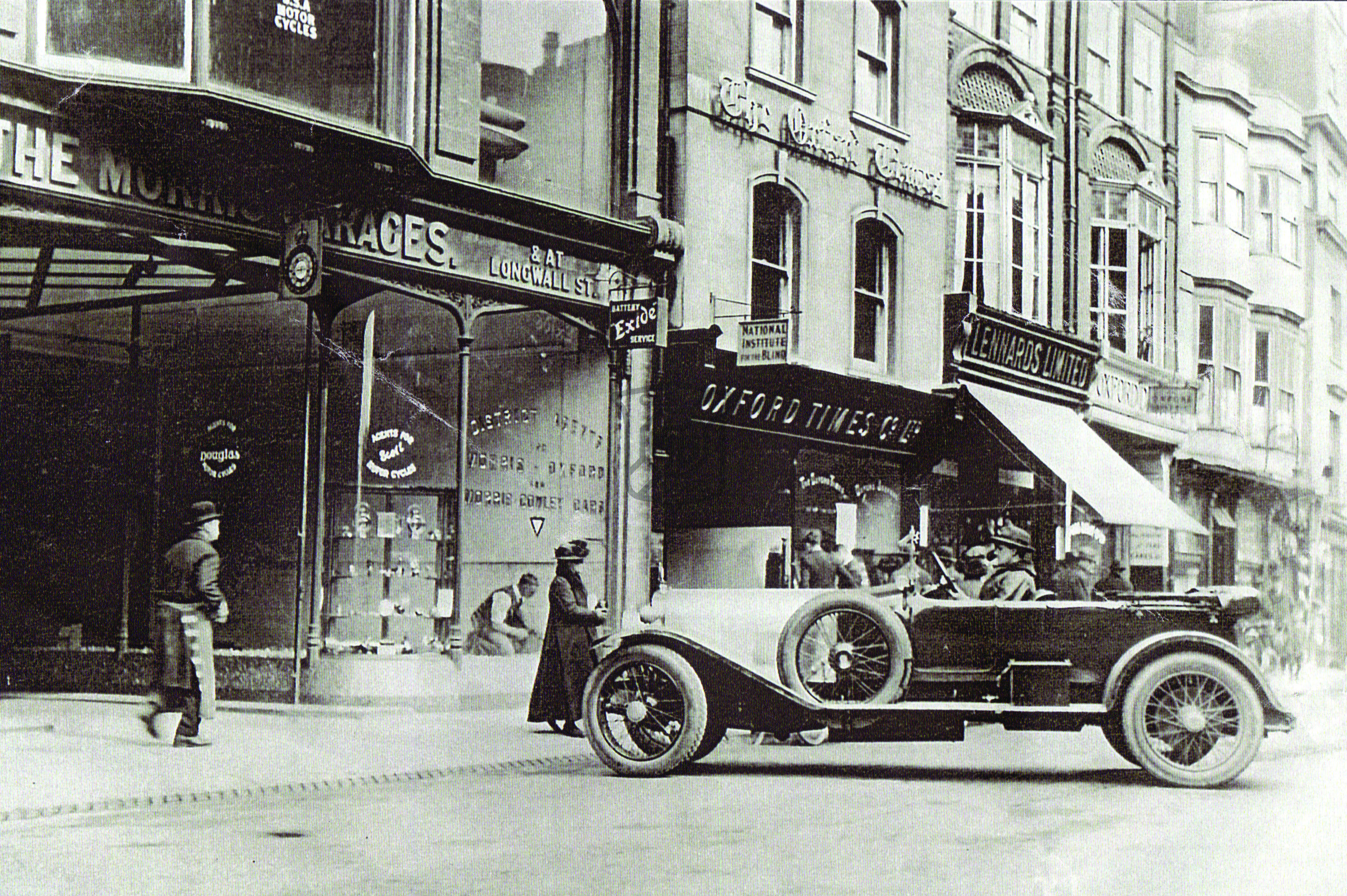
Whilst all this was going on, Morris Motors, in August 1928, announced their brand new baby car, the Morris Minor, with which they hoped to compete in the small car market with the highly successful Austin Seven. Meanwhile the boys at Edmund Road had managed to get their hands on one of the experimental Minors from Morris Motors, stripped it of its four-seater body replacing it with a lightweight boat tailed two-seater fabric body on a wooden frame, fitted a vee-screen, equipped it with cycle wings, louvered sill panels, MG badges on the wheel hubs and a scaled down 18/80 radiator, turning it into a little gem of a sports car which they called the MG 8/33 Midget. The Midget brand would become synonymous with MG for the next 50 years. Displayed on the MG stand (their first ever) at Olympia alongside its big brother, at an all up price of £175, it was an immediate sensation. Plans were immediately drawn up for its manufacture, with production finally getting underway in March 1929.
The last car to be designed at Edmund Road was the 18/80 Mk II. The track was increased to 4ft 4in whilst the frame was made sturdier; all the major components were beefed up with the result that the weight increased by over 300lbs. Although this model continued in production until 1933 it sold less than half the numbers of the Mk I. The Midget however would capture the imagination of the public to the extent that it would spawn a whole series of small sports cars that would become synonymous with the initials MG.
The increase in production at Edmund Road was already giving Kimber cause for concern, and with no room for expansion on the present site he began looking for new premises once again.
Old Number One
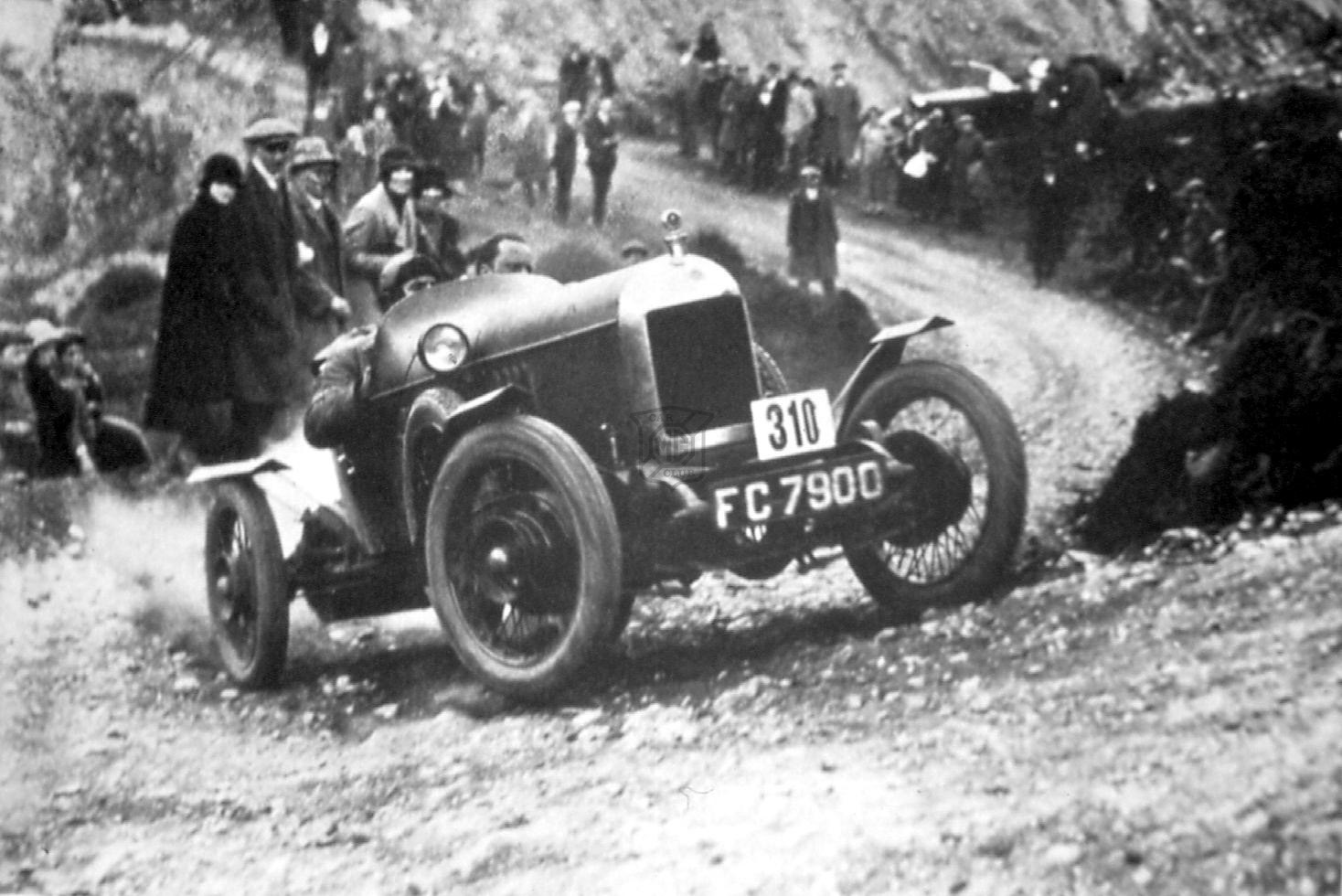
FC 7900 or ‘Old Number One’ as it is better known was built in the Longwall workshops to Kimber’s specific instructions. With its extensively modified Morris Oxford chassis and 11.9hp special Hotchkiss overhead valve engine it was quite unlike anything else that the Morris Garages had undertaken.
Completed in March 1925 and sporting a special close-coupled two-seater body by Carbodies, it competed in the 1925 Lands End Trial in the capable hands of Cecil Kimber and his passenger Wilfred Matthews, qualifying for a gold medal. The car was sold off soon after and was bought back by the company in the early 1930s.

 MG Car Club
MG Car Club